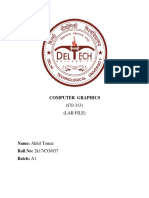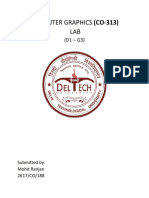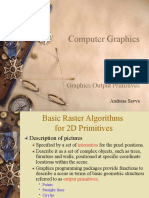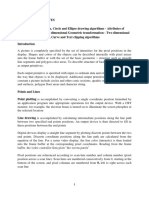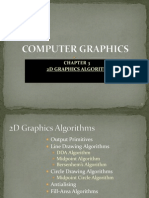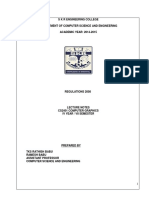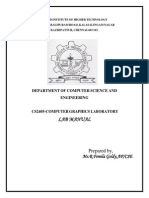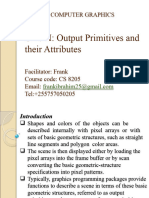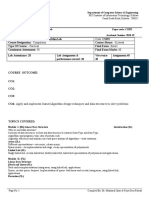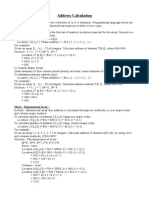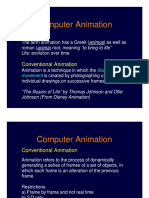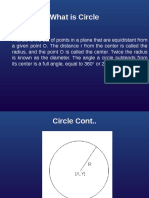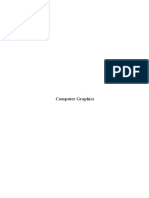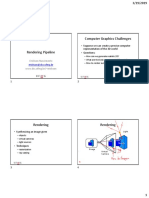0% found this document useful (0 votes)
533 views34 pagesMI DAA Bresenham Line Drawing
The document discusses computer graphics and algorithms for drawing 2D primitives like lines, circles, and ellipses. It covers the Digital Differential Algorithm (DDA) and Bresenham's algorithm for drawing lines. DDA uses incremental integer calculations to determine pixel coordinates along the line, while Bresenham's algorithm uses only integer calculations for faster performance without floating point operations. Examples are provided to illustrate how DDA works for lines with different slopes.
Uploaded by
MazharulislamCopyright
© © All Rights Reserved
We take content rights seriously. If you suspect this is your content, claim it here.
Available Formats
Download as PDF, TXT or read online on Scribd
0% found this document useful (0 votes)
533 views34 pagesMI DAA Bresenham Line Drawing
The document discusses computer graphics and algorithms for drawing 2D primitives like lines, circles, and ellipses. It covers the Digital Differential Algorithm (DDA) and Bresenham's algorithm for drawing lines. DDA uses incremental integer calculations to determine pixel coordinates along the line, while Bresenham's algorithm uses only integer calculations for faster performance without floating point operations. Examples are provided to illustrate how DDA works for lines with different slopes.
Uploaded by
MazharulislamCopyright
© © All Rights Reserved
We take content rights seriously. If you suspect this is your content, claim it here.
Available Formats
Download as PDF, TXT or read online on Scribd
/ 34













